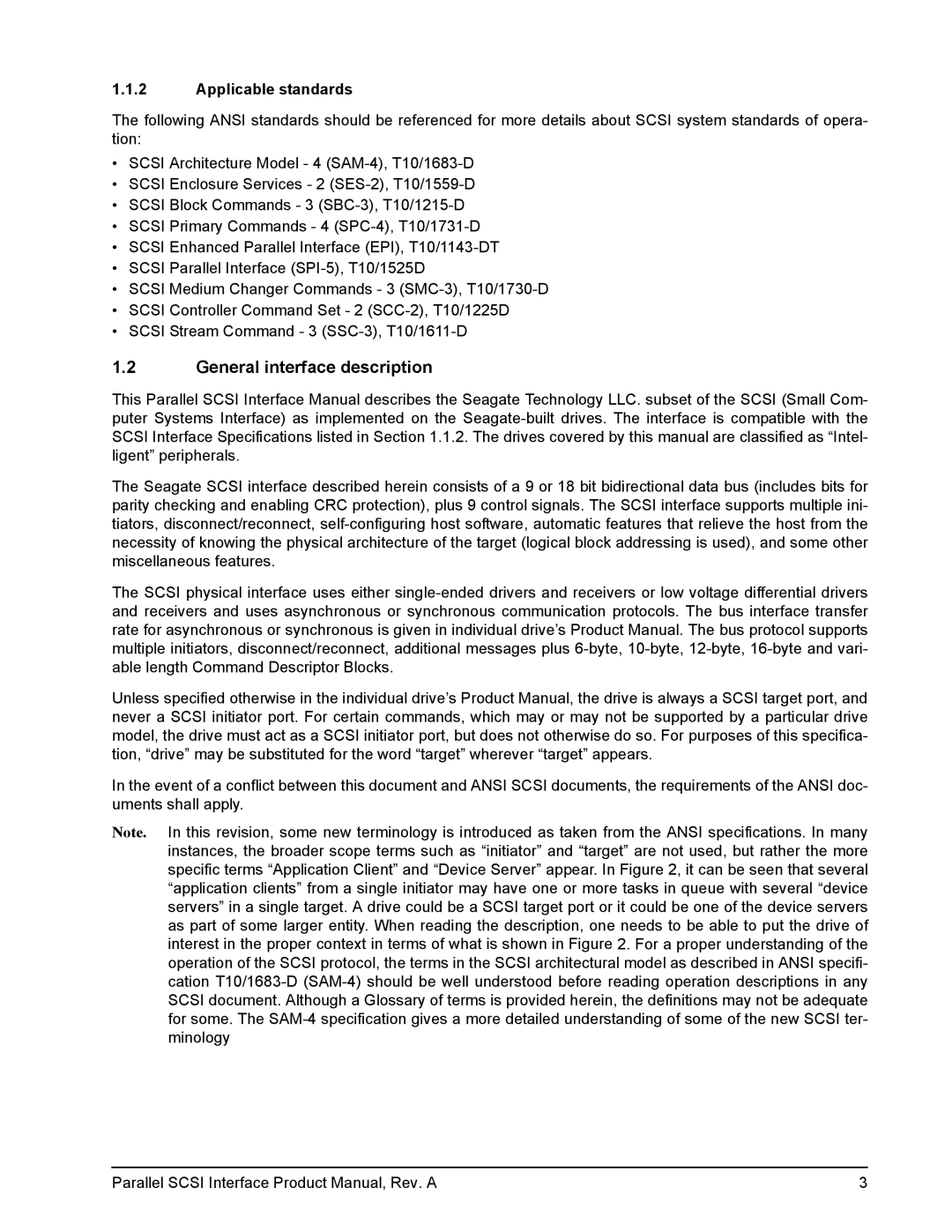1.1.2Applicable standards
The following ANSI standards should be referenced for more details about SCSI system standards of opera- tion:
•SCSI Architecture Model - 4
•SCSI Enclosure Services - 2
•SCSI Block Commands - 3
•SCSI Primary Commands - 4
•SCSI Enhanced Parallel Interface (EPI),
•SCSI Parallel Interface
•SCSI Medium Changer Commands - 3
•SCSI Controller Command Set - 2
•SCSI Stream Command - 3
1.2General interface description
This Parallel SCSI Interface Manual describes the Seagate Technology LLC. subset of the SCSI (Small Com- puter Systems Interface) as implemented on the
The Seagate SCSI interface described herein consists of a 9 or 18 bit bidirectional data bus (includes bits for parity checking and enabling CRC protection), plus 9 control signals. The SCSI interface supports multiple ini- tiators, disconnect/reconnect,
The SCSI physical interface uses either
Unless specified otherwise in the individual drive’s Product Manual, the drive is always a SCSI target port, and never a SCSI initiator port. For certain commands, which may or may not be supported by a particular drive model, the drive must act as a SCSI initiator port, but does not otherwise do so. For purposes of this specifica- tion, “drive” may be substituted for the word “target” wherever “target” appears.
In the event of a conflict between this document and ANSI SCSI documents, the requirements of the ANSI doc- uments shall apply.
Note. In this revision, some new terminology is introduced as taken from the ANSI specifications. In many instances, the broader scope terms such as “initiator” and “target” are not used, but rather the more specific terms “Application Client” and “Device Server” appear. In Figure 2, it can be seen that several “application clients” from a single initiator may have one or more tasks in queue with several “device servers” in a single target. A drive could be a SCSI target port or it could be one of the device servers as part of some larger entity. When reading the description, one needs to be able to put the drive of interest in the proper context in terms of what is shown in Figure 2. For a proper understanding of the operation of the SCSI protocol, the terms in the SCSI architectural model as described in ANSI specifi- cation
Parallel SCSI Interface Product Manual, Rev. A | 3 |
